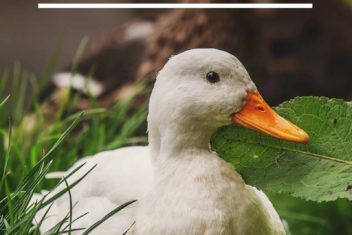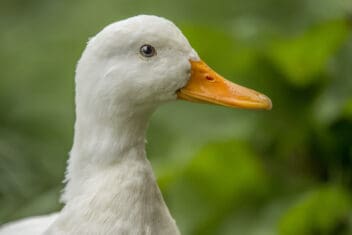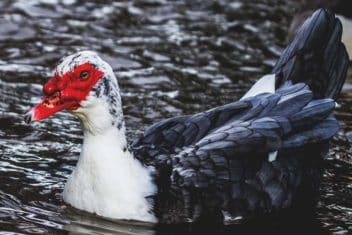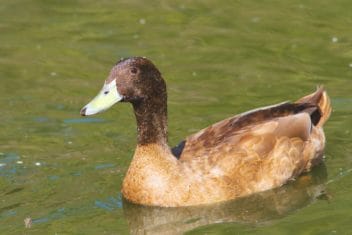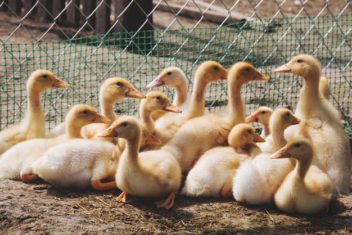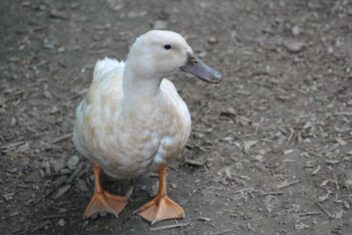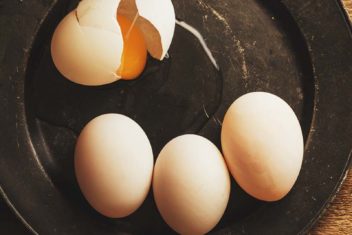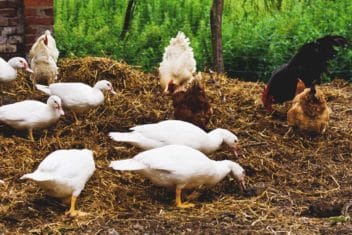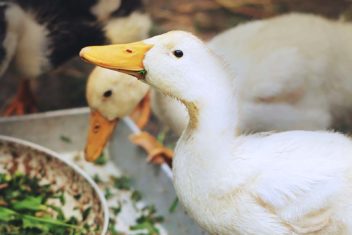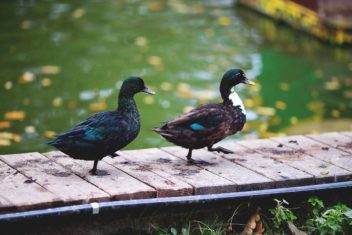You know those fuzzy little yellow ducklings you see just about everywhere, in calendars and adorable baby animal stock images? Yep, those are usually Pekin ducklings, one of the most readily available duck breeds in all feed stores across America during springtime.
In addition to being every photographer’s favorite to portray the quintessential image of a fuzzy yellow duckling, this breed has many practical uses that make them desirable for many farmers.
Pekin ducks can produce plenty of rich duck eggs as well as reach a plump size to make them perfect for eating. If you’re after a good dual-purpose duck breed, the Pekin might be ideal for you.
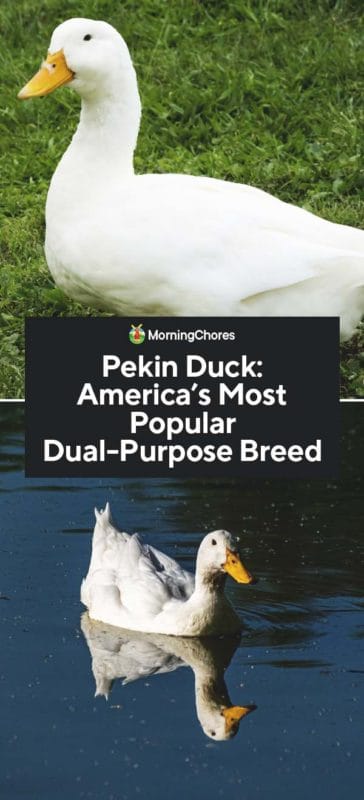
About Pekin Ducks
The breeding stock for this white duck originated in Peking, China, which is now known as Beijing. In a 124 day voyage to America, the 15 original ducks dwindled and in the end, four ducks became the breeding stock for the American Pekin. After two years of selective breeding, Pekins were accepted into the American Poultry Association in 1874.
Today, the Pekin is the most widespread duck in America, with tens of millions being raised for meat production alone. This duck makes a decent dual-purpose breed, but their primary use is undoubtedly commercial meat production.
Pekin Duck Characteristics
1. Size and Weight
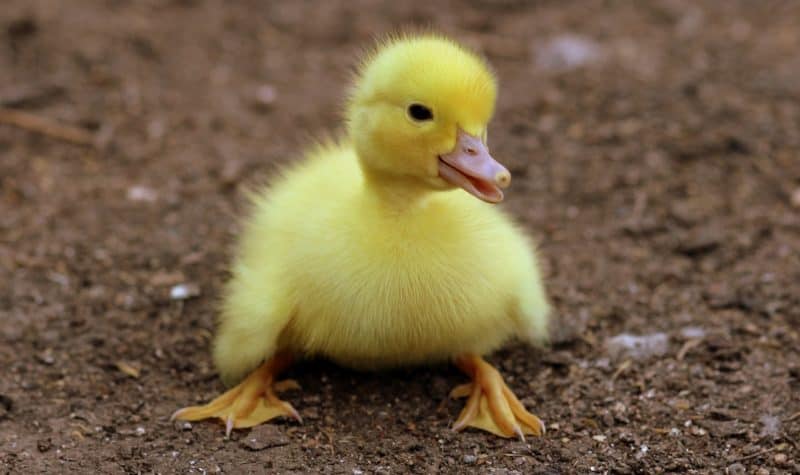
Naturally, this is one of your larger duck breeds since it is so popular for meat production. On average, a fully grown Pekin will weigh somewhere between 8 and 12 pounds. As with most animals, drakes will generally grow a bit larger than the hens.
2. Temperament
In addition to their meat and egg production qualities, Pekins are commonly kept as pet ducks. Ducks, in general, have the strong urge to imprint upon their caretakers if they receive a lot of attention in their first few weeks of life. Pekins are sweet and gentle ducks that will carry their adoring dispositions with them into adulthood if they are doted on frequently.
Although this is a sweet duck breed, Pekin hens have very little desire to mother their own young and do not have the tendency to go broody. If you’re interested in breeding Pekins, you’ll definitely need to get experience incubating duck eggs.
3. Egg Production
Ducks have the ability to produce an outstanding amount of eggs per year, with some breeds laying up to 325 eggs in a year. While Pekins aren’t the biggest overachievers in the egg-laying department, they can still outlay many chicken breeds.
You can generally expect your average Pekin duck hen to lay somewhere between 150-200 large, white eggs in a single year.
4. Meat Production
As you’ve likely gathered by now, Pekins are definitely outstanding meat producers. Before Pekins came around, Cayugas were the main meat producers. However, Cayugas had a drawback that Pekins didn’t. The black feathers on a Cayuga could sometimes lead to a less presentable duck carcass. The white feathers on a Pekin make a much more clean and visually pleasing carcass.
All around, Pekins have many qualities that make them the perfect meat producer. This duck can grow rapidly and convert food to meat at a more impressive rate than many duck breeds. The white feathers paired with large meat quantity along with rapid growth rate just make this an irresistible meat producer.
Taking Care of Pekin Ducks
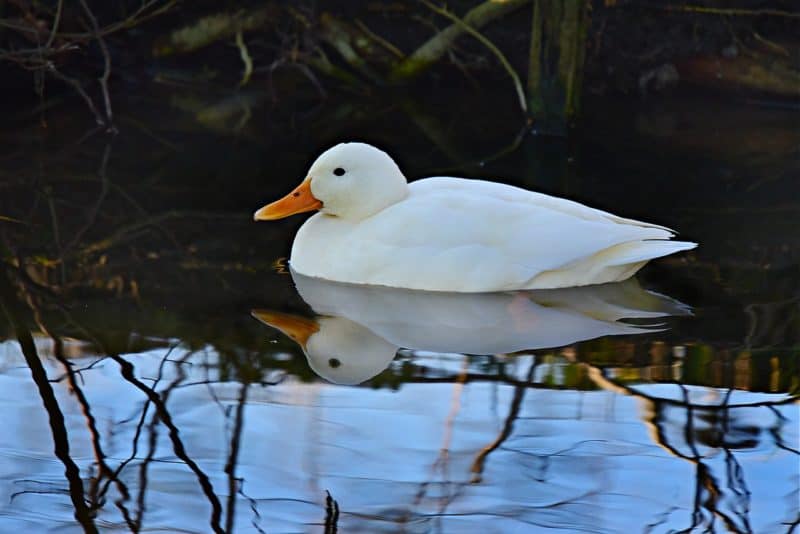
1. Feeding and Nutrition
The way you choose to feed your ducks will vary depending on your desired use for your birds. Ducklings have the same feed requirement no matter their intended use. However, as your birds grow older, you’ll need to choose their feed carefully based on the purposes of your Pekins. If you start out with ducklings, the ideal feed would be a duckling or waterfowl starter.
Despite the popularity of ducks, many feed stores do not carry a feed specifically formulated with ducks in mind, which means you may need to compromise. Chick starter can be used when raising ducks, although sometimes the addition of brewer’s yeast is necessary to make sure your ducklings get all of their vitamins.
If you plan on raising your Pekins to butcher them as soon as they are big enough, it’s ok to feed your ducks a higher protein feed since your end goal isn’t a long life. Higher protein feeds such as broiler feed will help your ducks to reach a processing weight faster. The reason you wouldn’t want this with an egg-laying duck is that rapid development can cause leg and wing issues.
For those raising egg-laying ducks or pets, you’ll need to supply your ducks with a diet that will sustain them for long, healthy lives. Around nine or so weeks of age, you can transfer your ducks to a grower type feed with around 15% protein for healthy growth. 20-week old ducks will need to be transferred to a laying diet to prepare hens for egg-laying and to sustain their adult bodies.
2. Housing and Fencing
If you’re used to housing chickens, the issue of duck housing is naturally a little bit different than chicken housing.
When it comes to houses, it’s usually best to keep duck coops on the ground because ducks can sometimes be fickle about ascending ramps. Inside your duck coop, provide at least 6-square feet per duck. It’s unnecessary to provide raised nesting boxes or roosts in duck coops because your Pekins will prefer to do all their business on the ground.
Outside in the run, provide 12-15-square feet per duck to make sure everyone has plenty of room for running around and stretching their wings.
As with all ducks, providing a source of water is important for the health and happiness of your webbed footed friends.
3. Health Issues and Care
When animals are bred specifically for one trait such as rapid growth, it can result in some less than stellar characteristics in other areas. Pekins can have health issues with their legs when they grow too quickly, which is why a moderating diet is important.
Other than issues that can arise when laying ducks are fed too much protein during growth, Pekins are robust ducks that will thrive in a healthy environment.
4. Breeding
Since Pekins do not have a tendency to go broody, you will need to hatch your own ducklings if you plan to keep this breed for multiple generations. When it comes to choosing breeding stock, always make sure to choose the most vigorous and healthy parent to ensure you’re hatching healthy ducklings.
Pekin Breed Alternatives
1. Cayuga
Before the Pekin made an appearance, Cayuga ducks were the number one breed for duck meat production. Cayugas grow to impressive sizes, and they can even lay black eggs. As long as you don’t mind the occasional black pinfeather, Cayugas make an excellent pick.
2. Silver Appleyard
If you’re one of those homesteaders that’s a sucker for heritage breeds, the Silver Appleyard might be your duck. Silver Appleyards are an endangered breed that makes a good dual-purpose duck for all your egg-laying and meat-producing needs.
Did You Know?
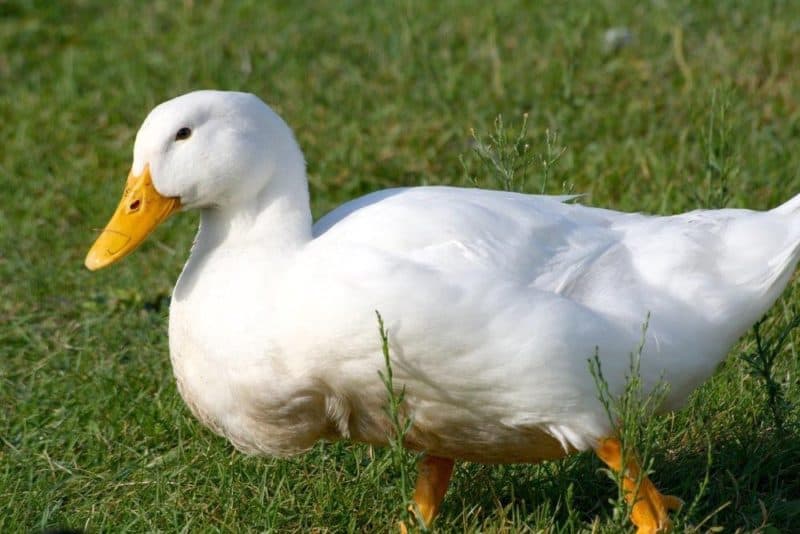
The famous mascot of the insurance company, Aflac, is actually modeled after a Pekin duck!
All in all, Pekins make an excellent breed for many situations. This might not be the duck for every farm, but it’s clear why they are one of the most popular ducks out there!

